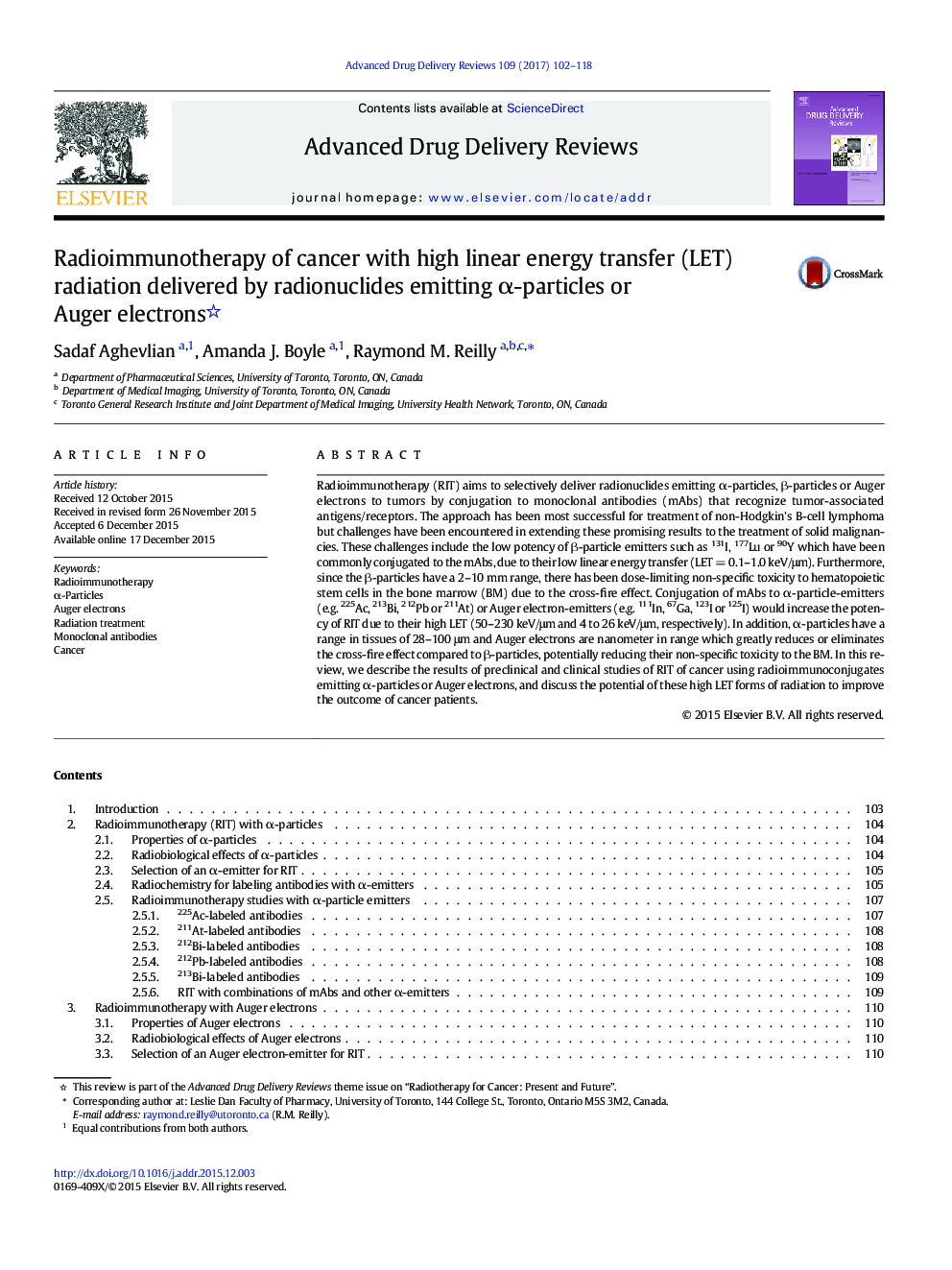| Article ID | Journal | Published Year | Pages | File Type |
|---|---|---|---|---|
| 5520028 | Advanced Drug Delivery Reviews | 2017 | 17 Pages |
Radioimmunotherapy (RIT) aims to selectively deliver radionuclides emitting α-particles, β-particles or Auger electrons to tumors by conjugation to monoclonal antibodies (mAbs) that recognize tumor-associated antigens/receptors. The approach has been most successful for treatment of non-Hodgkin's B-cell lymphoma but challenges have been encountered in extending these promising results to the treatment of solid malignancies. These challenges include the low potency of β-particle emitters such as 131I, 177Lu or 90Y which have been commonly conjugated to the mAbs, due to their low linear energy transfer (LET = 0.1-1.0 keV/μm). Furthermore, since the β-particles have a 2-10 mm range, there has been dose-limiting non-specific toxicity to hematopoietic stem cells in the bone marrow (BM) due to the cross-fire effect. Conjugation of mAbs to α-particle-emitters (e.g. 225Ac, 213Bi, 212Pb or 211At) or Auger electron-emitters (e.g. 111In, 67Ga, 123I or 125I) would increase the potency of RIT due to their high LET (50-230 keV/μm and 4 to 26 keV/μm, respectively). In addition, α-particles have a range in tissues of 28-100 μm and Auger electrons are nanometer in range which greatly reduces or eliminates the cross-fire effect compared to β-particles, potentially reducing their non-specific toxicity to the BM. In this review, we describe the results of preclinical and clinical studies of RIT of cancer using radioimmunoconjugates emitting α-particles or Auger electrons, and discuss the potential of these high LET forms of radiation to improve the outcome of cancer patients.
Graphical abstractDownload high-res image (80KB)Download full-size image
